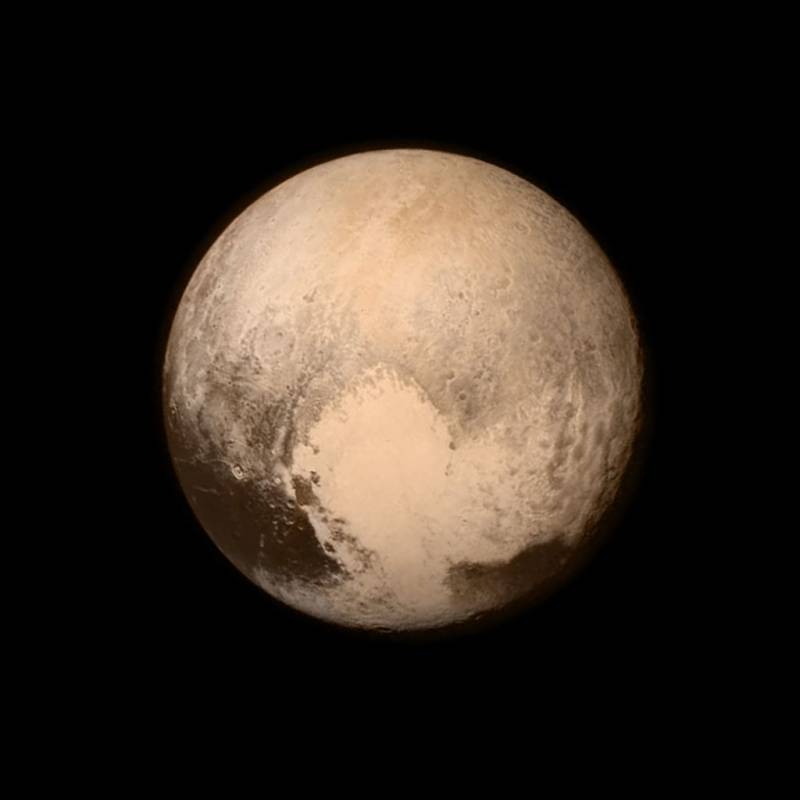Player FM 앱으로 오프라인으로 전환하세요!
Pluto’s Got a Heart! Sure, It’s an Icy Plain of Nitrogen, But Still …
Manage episode 254097606 series 2486058
One of the most stunning discoveries of the 2015 New Horizons flyby mission to Pluto was a big, heart-shaped region full of canyons, plains and mountain chains.
As you may remember, Pluto lost its status as a planet a few years ago. Now, astronomers call it a “dwarf” planet. Despite that rejection, this planet has heart — a big heart-shaped region known as Tombaugh Regio. One of the most stunning discoveries of the 2015 New Horizons flyby mission.
“You have to imagine that everybody expected a flat ball covered with ice,” said Tanguy Bertrand, a postdoctoral research fellow at NASA Ames.

Instead, astronomers saw a beautiful, diverse landscape that includes canyons, plains and mountain chains. Tombaugh Regio in particular got a lot of attention because it was so visually striking.
Bertrand is lead author on a new paper that examines how the west lobe of the heart, an area known as Sputnik Planitia, controls the dwarf planet’s winds. While the eastern half of the lobe is scraggly mountains and the western half is a frozen plane of nitrogen. And not just any nitrogen. This pulses with a kind of beat that makes the winds flow westward.
During the day, with the heat of the sun, the nitrogen ice warms and turns into vapor, creating a pressure that flows toward a darker, cooler region, where it condenses and re-forms as ice. This creates a flow from north to south and back. The planet is also spinning eastward. This rotation (because of the Coriolis effect) deflects the winds and they flow in a westward direction.
A similar process generates winds on Earth, but it’s slightly more complicated. Air rises in the equatorial zones, flows toward cooler polar regions, drops down and returns toward the equator in what scientists call “Hadley cells.” This circulation creates the trade winds, tropical rain-belts and hurricanes, subtropical deserts and the jet streams. On our planet, though, winds don’t flow in any one given direction.
Interesting fact: NASA researchers found this effect on Pluto by applying weather forecast models made for Earth.
“[This] gives us some perspective and gives us a natural laboratory to improve our knowledge,” Bertrand said. “It gives us a chance to test theories, learn more about fluid dynamics, and climate.”
Ultimately what they learn can improve how those weather models work for Earth and, possibly, for habitable exo-planets.
65 에피소드
Manage episode 254097606 series 2486058
One of the most stunning discoveries of the 2015 New Horizons flyby mission to Pluto was a big, heart-shaped region full of canyons, plains and mountain chains.
As you may remember, Pluto lost its status as a planet a few years ago. Now, astronomers call it a “dwarf” planet. Despite that rejection, this planet has heart — a big heart-shaped region known as Tombaugh Regio. One of the most stunning discoveries of the 2015 New Horizons flyby mission.
“You have to imagine that everybody expected a flat ball covered with ice,” said Tanguy Bertrand, a postdoctoral research fellow at NASA Ames.

Instead, astronomers saw a beautiful, diverse landscape that includes canyons, plains and mountain chains. Tombaugh Regio in particular got a lot of attention because it was so visually striking.
Bertrand is lead author on a new paper that examines how the west lobe of the heart, an area known as Sputnik Planitia, controls the dwarf planet’s winds. While the eastern half of the lobe is scraggly mountains and the western half is a frozen plane of nitrogen. And not just any nitrogen. This pulses with a kind of beat that makes the winds flow westward.
During the day, with the heat of the sun, the nitrogen ice warms and turns into vapor, creating a pressure that flows toward a darker, cooler region, where it condenses and re-forms as ice. This creates a flow from north to south and back. The planet is also spinning eastward. This rotation (because of the Coriolis effect) deflects the winds and they flow in a westward direction.
A similar process generates winds on Earth, but it’s slightly more complicated. Air rises in the equatorial zones, flows toward cooler polar regions, drops down and returns toward the equator in what scientists call “Hadley cells.” This circulation creates the trade winds, tropical rain-belts and hurricanes, subtropical deserts and the jet streams. On our planet, though, winds don’t flow in any one given direction.
Interesting fact: NASA researchers found this effect on Pluto by applying weather forecast models made for Earth.
“[This] gives us some perspective and gives us a natural laboratory to improve our knowledge,” Bertrand said. “It gives us a chance to test theories, learn more about fluid dynamics, and climate.”
Ultimately what they learn can improve how those weather models work for Earth and, possibly, for habitable exo-planets.
65 에피소드
모든 에피소드
×플레이어 FM에 오신것을 환영합니다!
플레이어 FM은 웹에서 고품질 팟캐스트를 검색하여 지금 바로 즐길 수 있도록 합니다. 최고의 팟캐스트 앱이며 Android, iPhone 및 웹에서도 작동합니다. 장치 간 구독 동기화를 위해 가입하세요.




